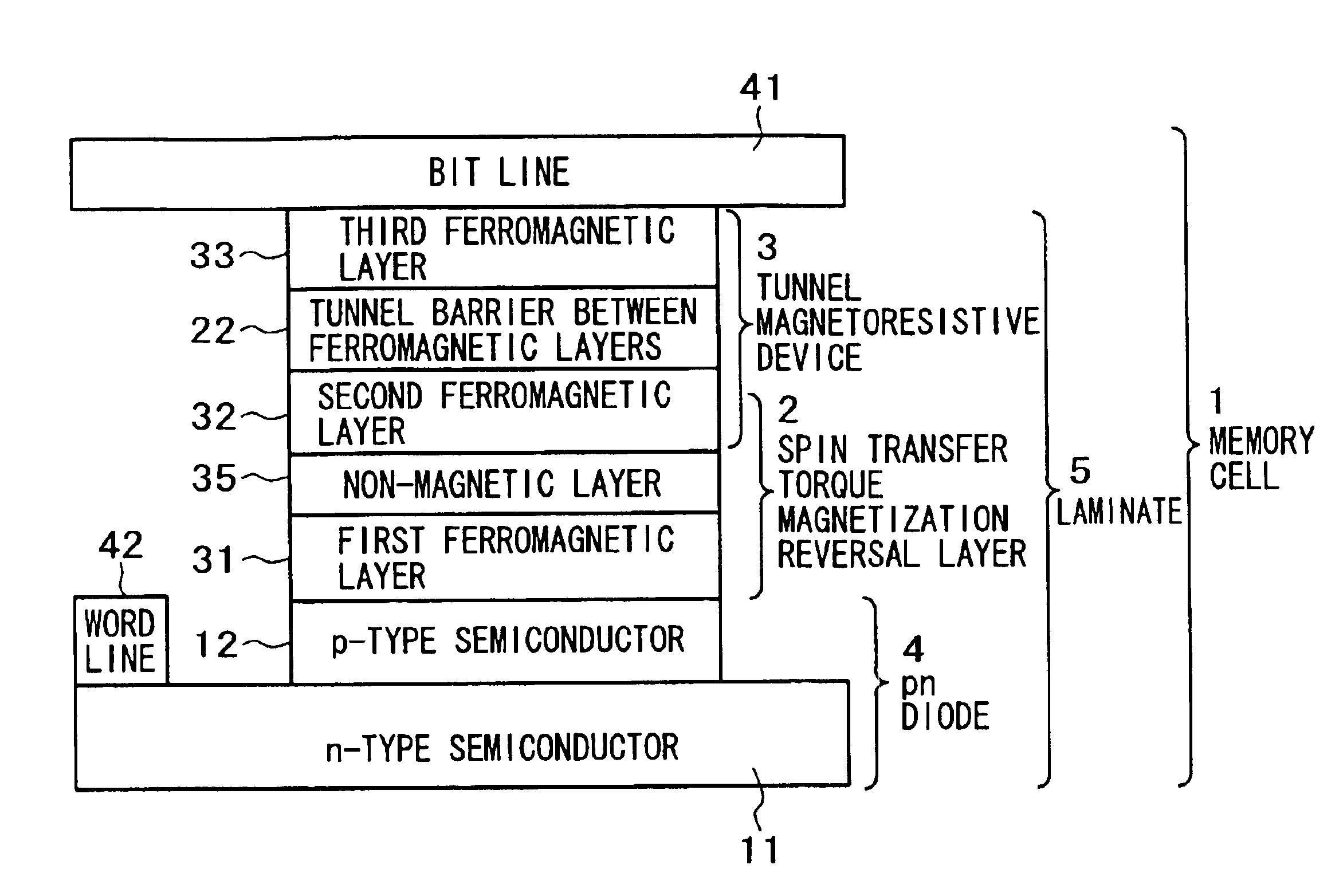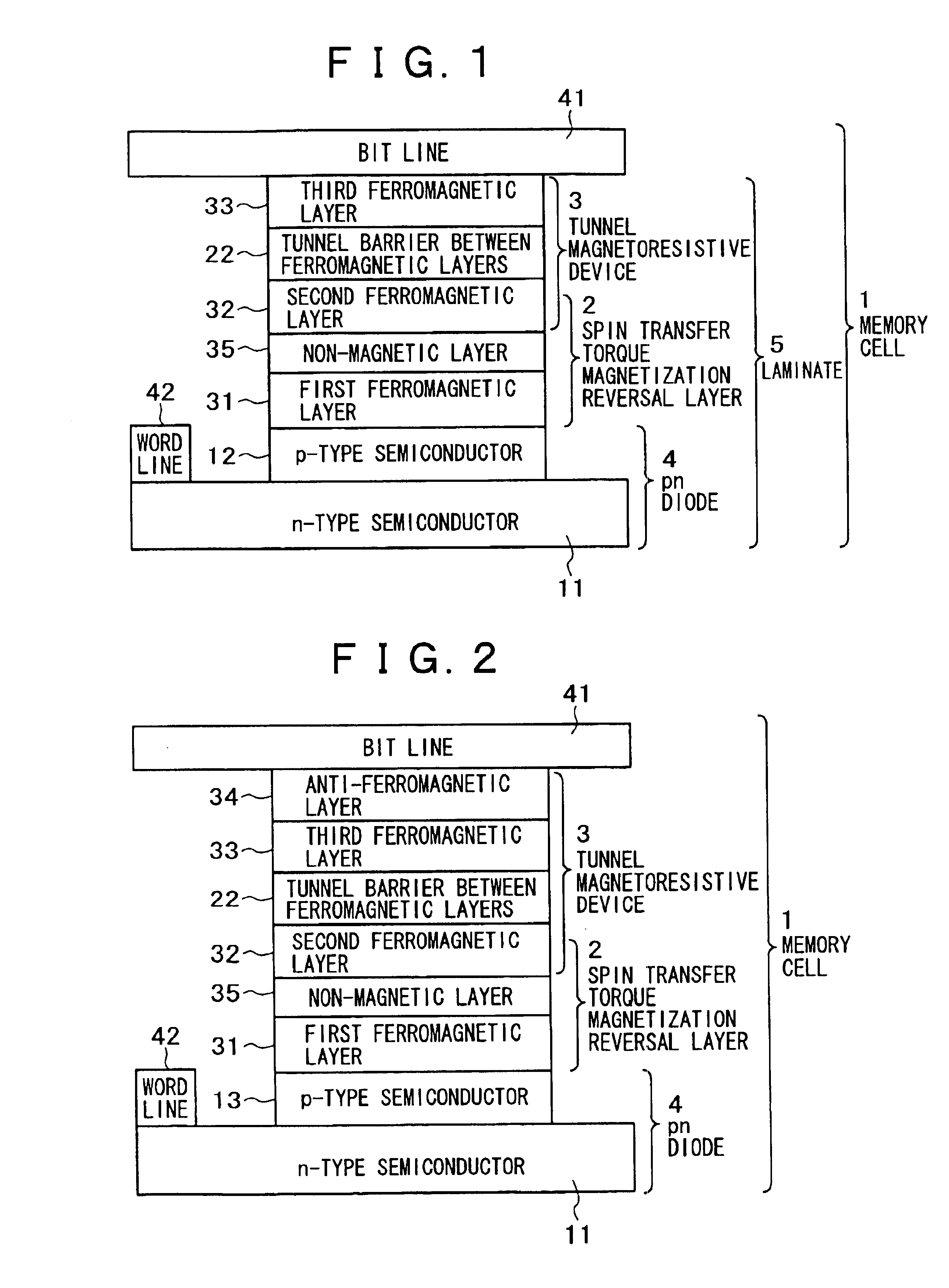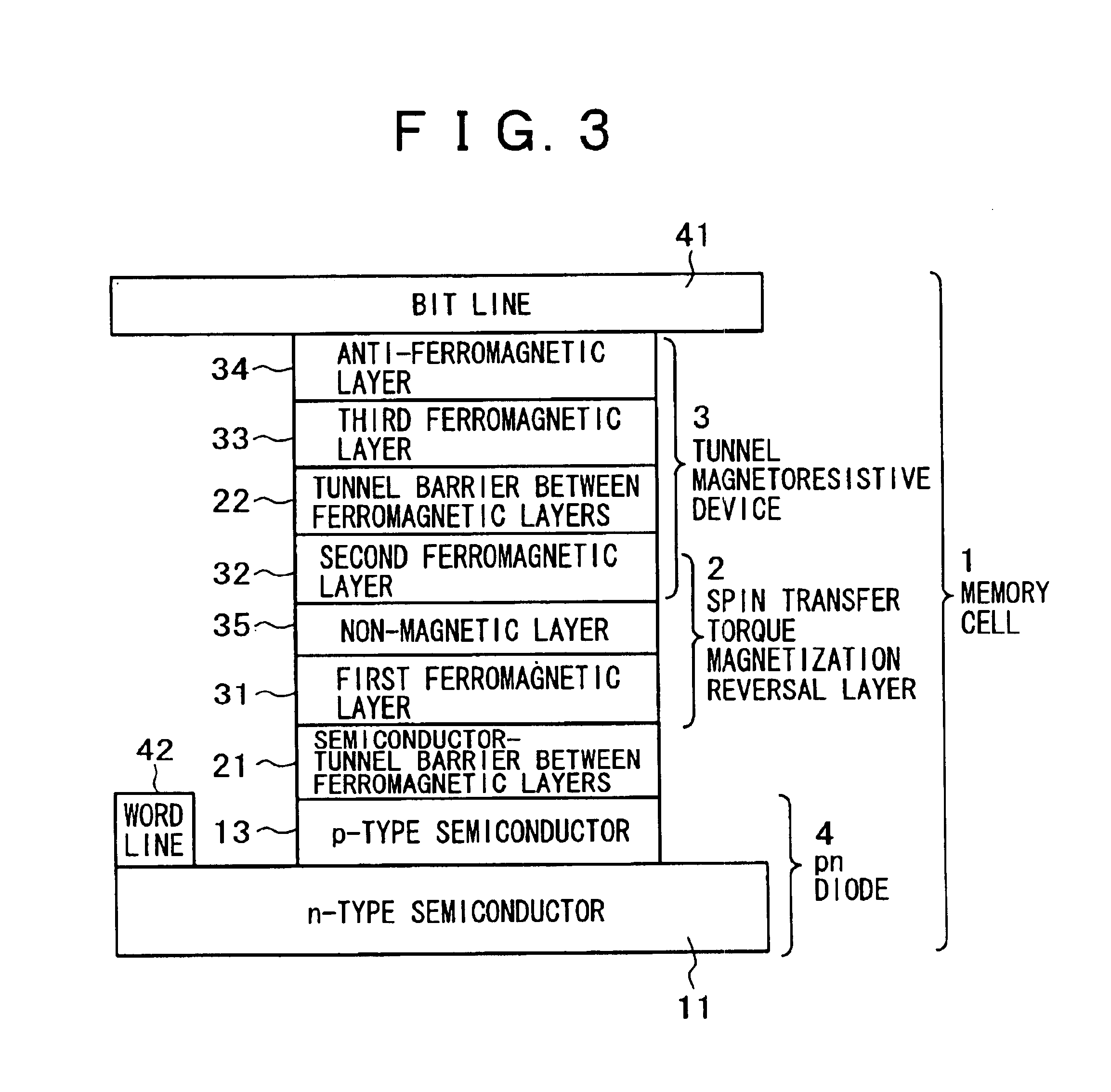High output nonvolatile magnetic memory
a nonvolatile, magnetic memory technology, applied in the direction of magnets, instruments, substrates/intermediate layers, etc., can solve the problems of large amount of power, low output, and reversal of magnetization, so as to reduce the number of electrode wires, reduce the power required, and increase the output of the tmr device
- Summary
- Abstract
- Description
- Claims
- Application Information
AI Technical Summary
Benefits of technology
Problems solved by technology
Method used
Image
Examples
embodiment 1
[Embodiment 1]
FIG. 1 schematically shows a sectional view of one memory cell according to the embodiment. A p-type semiconductor 12 is arranged on an n-type semiconductor 11 to form a pn junction. The pn junction comprises n-GaAs as an n-type semiconductor and p-GaAs as a p-type semiconductor. It may be preferable to use InGaAs for these semiconductors. The molecular beam epitaxy (MBE) is used to form the semiconductors.
Then, sputtering is used to form Co as a first ferromagnetic layer 31 and Cu as a non magnetic layer 35 without exposure from an ultra-high vacuum atmosphere. A laminated layer of the first ferromagnetic layer 31 and the non magnetic layer 35 is used to fabricate a spin transfer torque magnetization reversal layer 2. Then, a second ferromagnetic layer 32 of CoFe is formed, and a tunnel barrier between ferromagnetic layers 22 as Al is formed in this order.
Thereafter, plasma oxidation is applied to Al on the top surface without breaking the ultra-high vacuum atmosphere...
embodiment 2
[Embodiment 2]
FIG. 2 schematically shows a sectional view of a memory cell having an anti-ferromagnetic layer 34 in order to fix the magnetization direction of the third ferromagnetic layer according to the configuration in FIG. 1. The antiferromagnetic layer 34 uses MnPt. The other layer configurations of the memory cell 1 are the same as for the embodiment 1. Like the embodiment 1, photo lithography and EB lithography are used to form cells.
Like the embodiment 1, the embodiment 2 can use a current to arrange the magnetization direction of the second ferromagnetic free layer 32 parallel or anti-parallel to the magnetization direction of the third ferromagnetic layer 33, allowing magnetization reversal independent of a current-induced magnetic field. The manufactured cell also yielded representative current-voltage characteristics as shown in FIG. 13.
embodiment 3
[Embodiment 3]
FIG. 3 schematically shows a sectional view of a memory cell that forms a tunnel barrier between semiconductor and ferromagnetic layer between the pn diode and the first ferromagnetic layer according to the configuration in FIG. 2. This tunnel barrier between diode and ferromagnetic layer uses AlAs. The other layer configurations of the memory cell 1 are the same as for the embodiment 2. Like the embodiment 2, the embodiment 3 uses photo lithography, etching, and EB lithography to form cells.
Like the embodiment 1, the embodiment 3 can use a current to arrange the magnetization direction of the second ferromagnetic free layer 32 parallel or anti-parallel to the magnetization direction of the third ferromagnetic layer 33, allowing magnetization reversal independent of a current-induced magnetic field.
The manufactured cell also yielded representative current-voltage characteristics as shown in FIG. 13.
PUM
| Property | Measurement | Unit |
|---|---|---|
| magnetoresistive | aaaaa | aaaaa |
| nonmagnetic | aaaaa | aaaaa |
| spin current | aaaaa | aaaaa |
Abstract
Description
Claims
Application Information
 Login to View More
Login to View More - R&D
- Intellectual Property
- Life Sciences
- Materials
- Tech Scout
- Unparalleled Data Quality
- Higher Quality Content
- 60% Fewer Hallucinations
Browse by: Latest US Patents, China's latest patents, Technical Efficacy Thesaurus, Application Domain, Technology Topic, Popular Technical Reports.
© 2025 PatSnap. All rights reserved.Legal|Privacy policy|Modern Slavery Act Transparency Statement|Sitemap|About US| Contact US: help@patsnap.com



